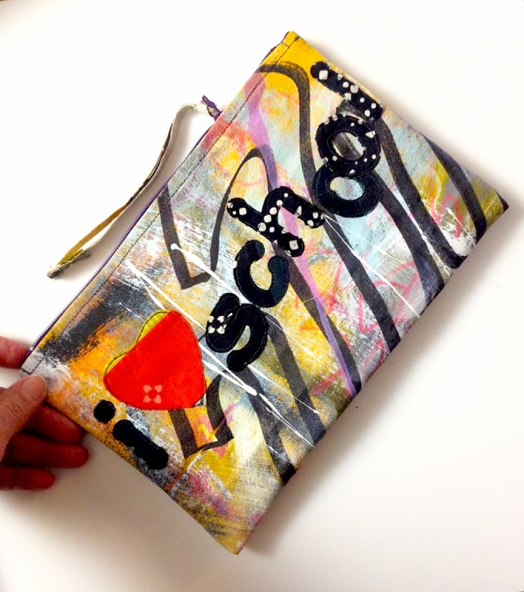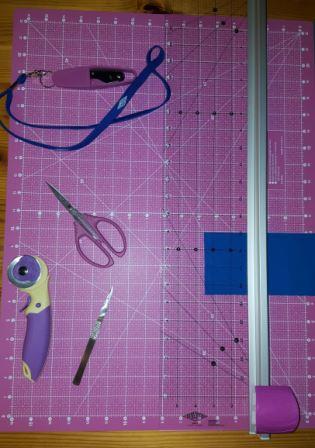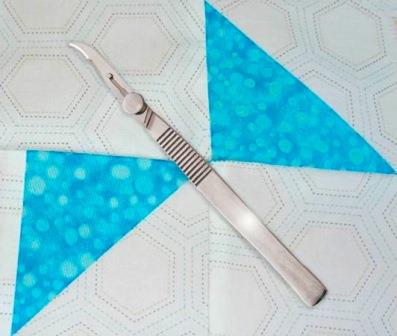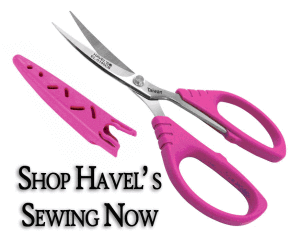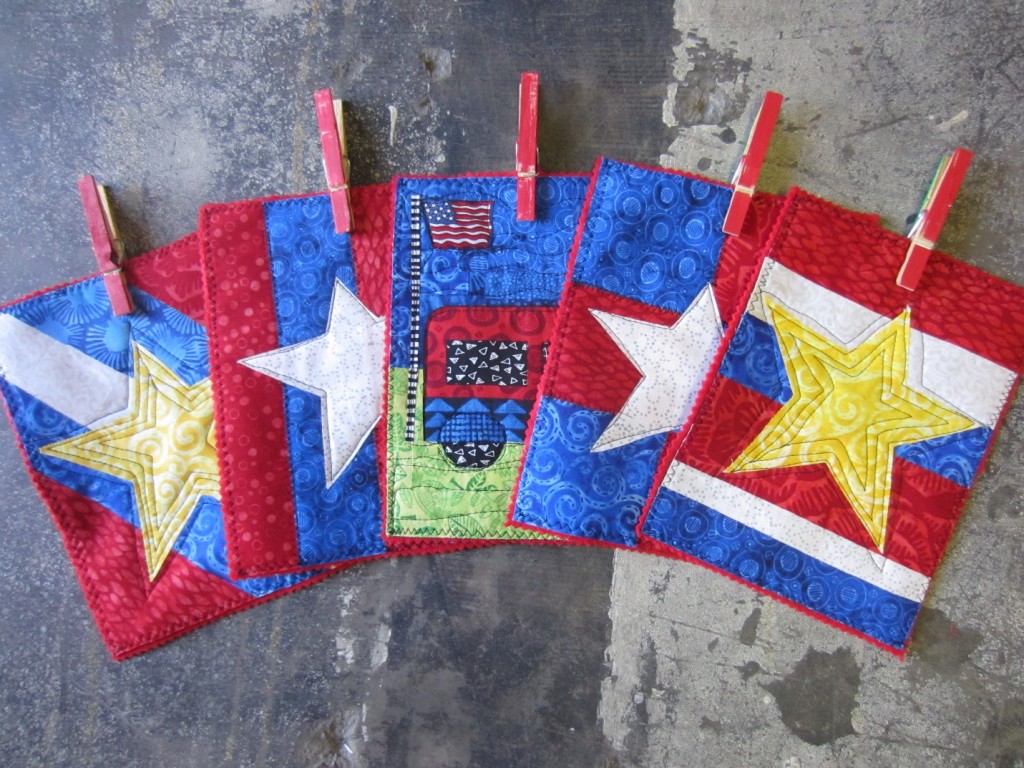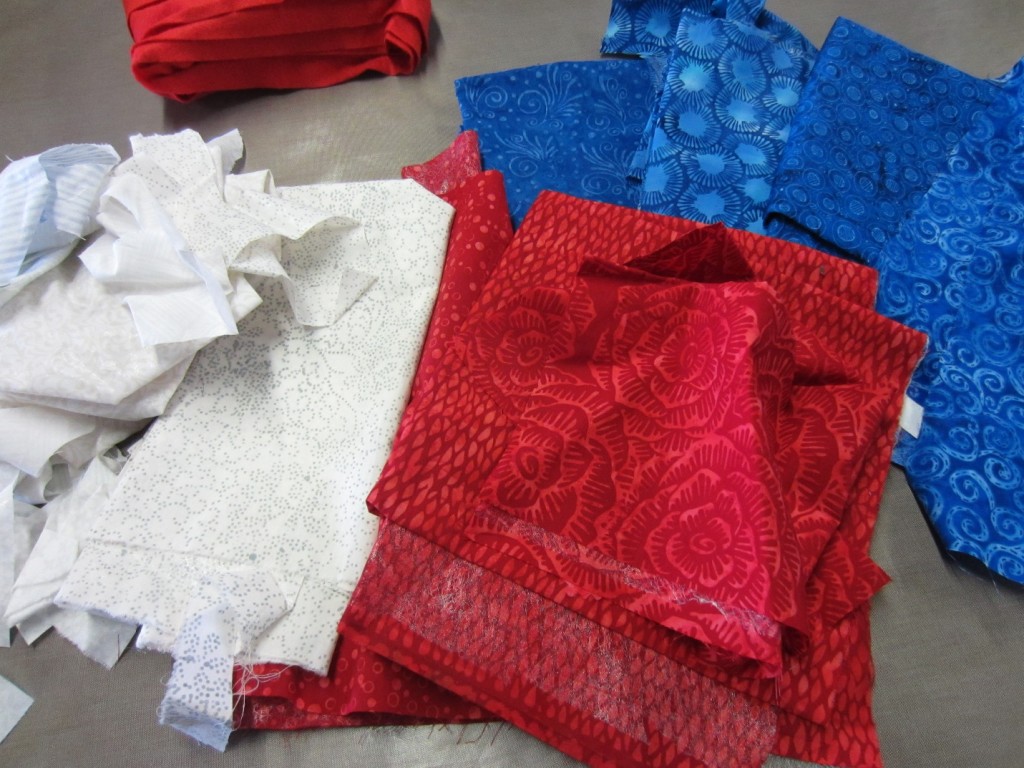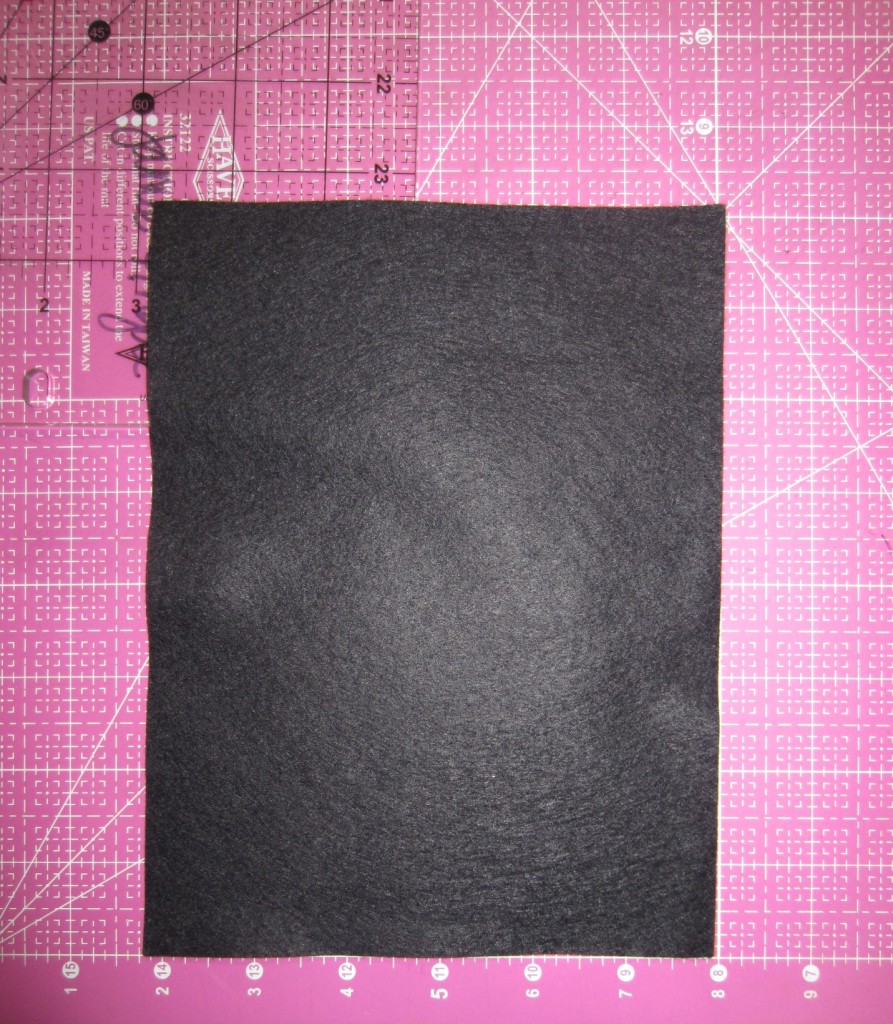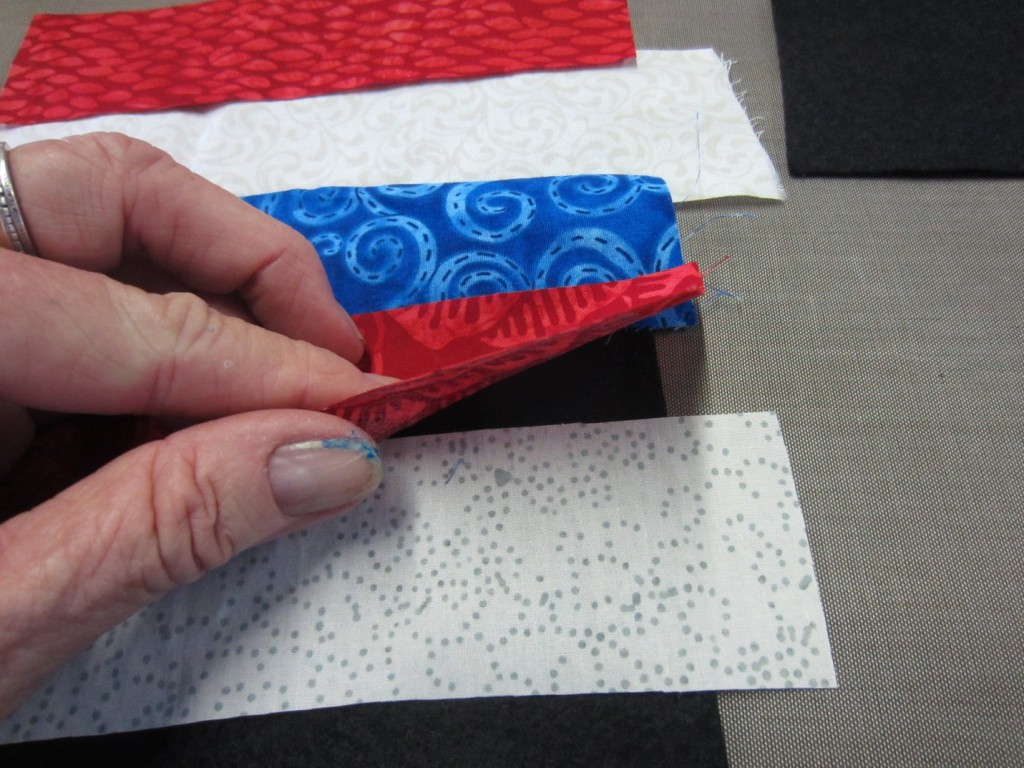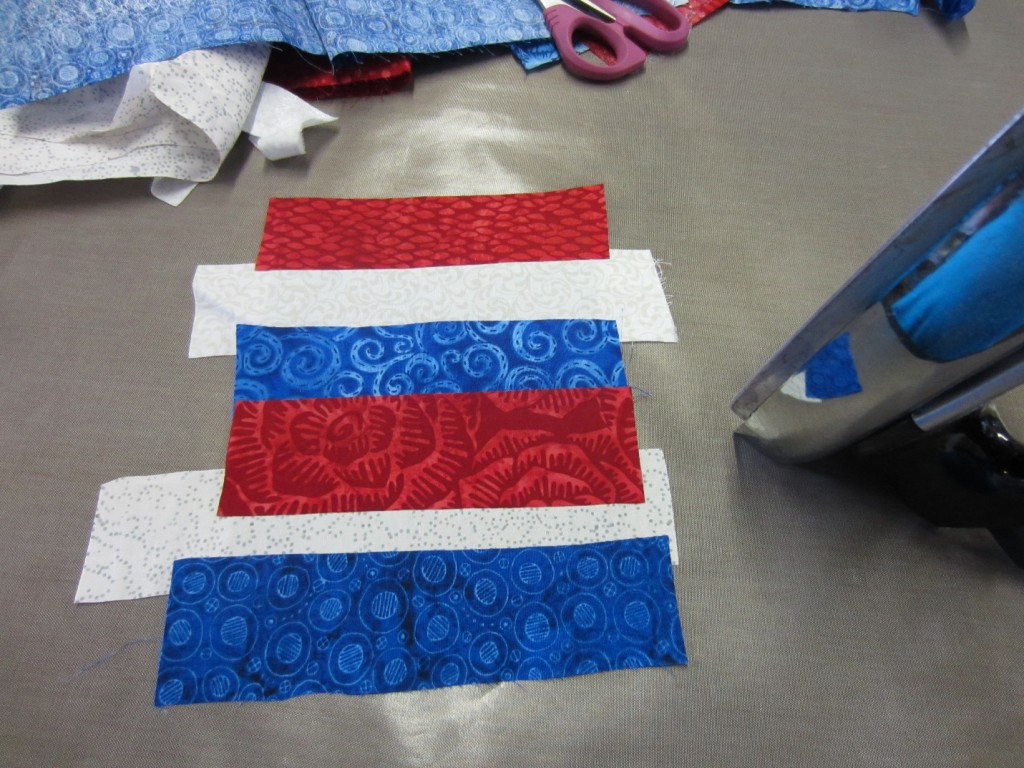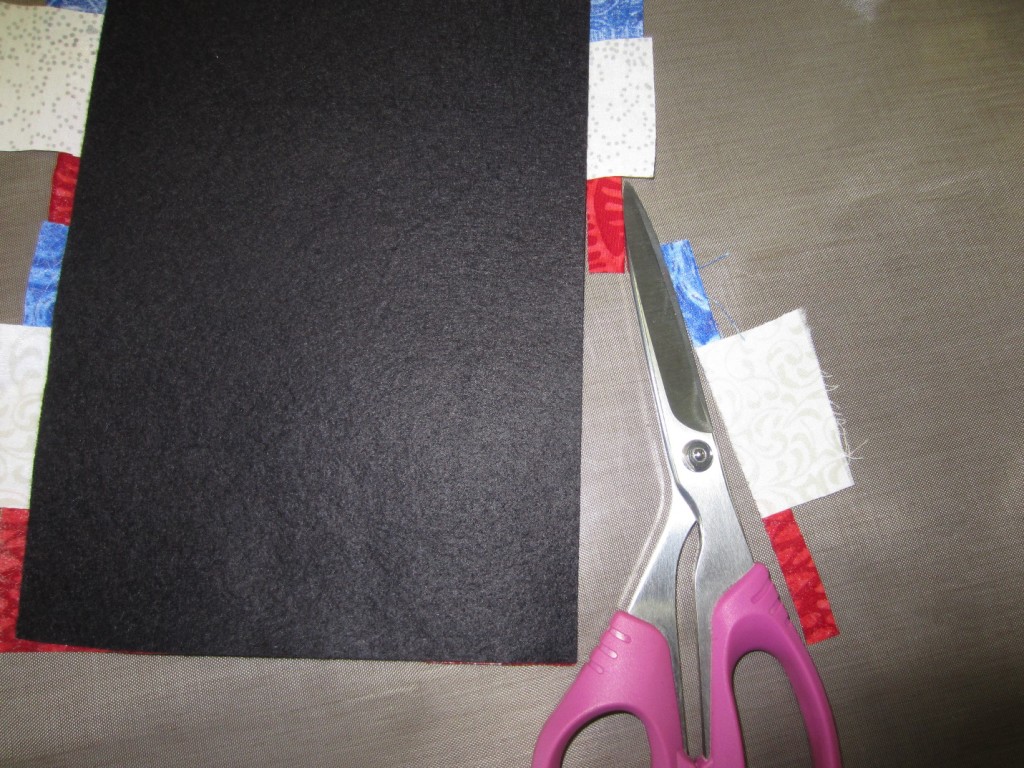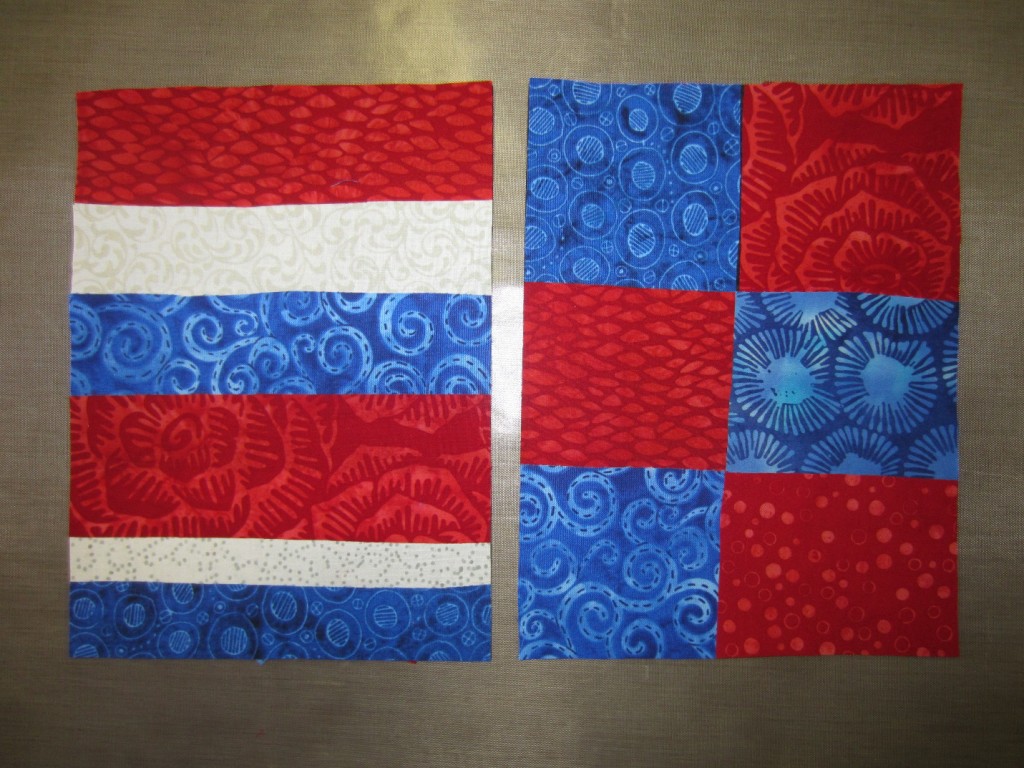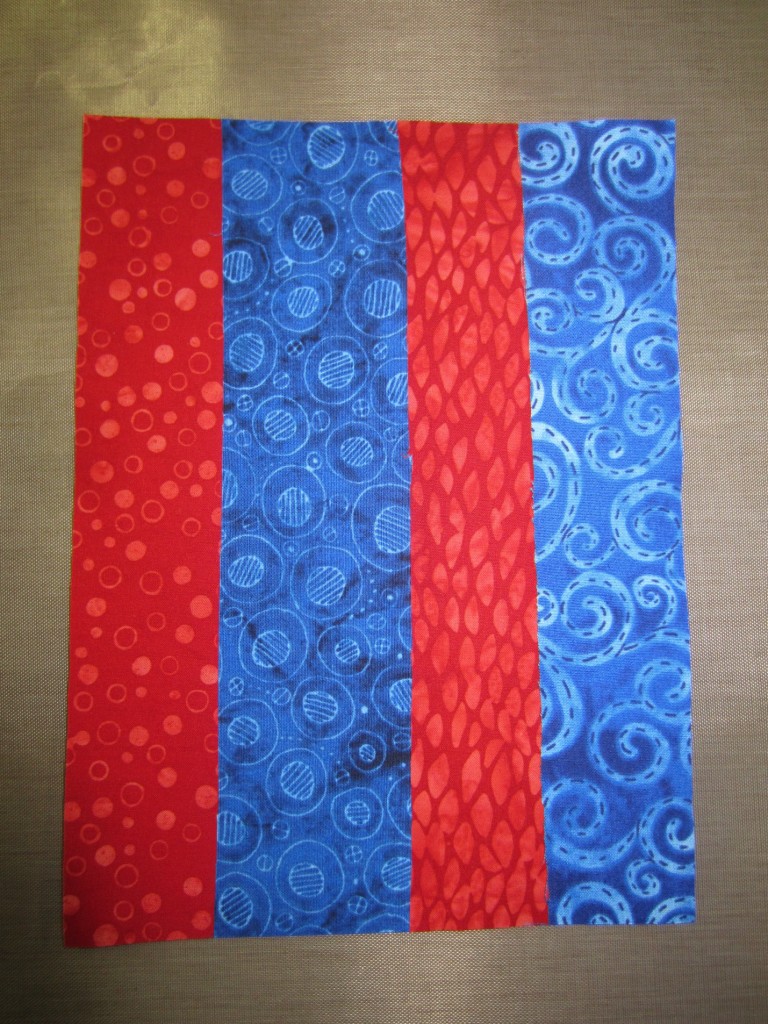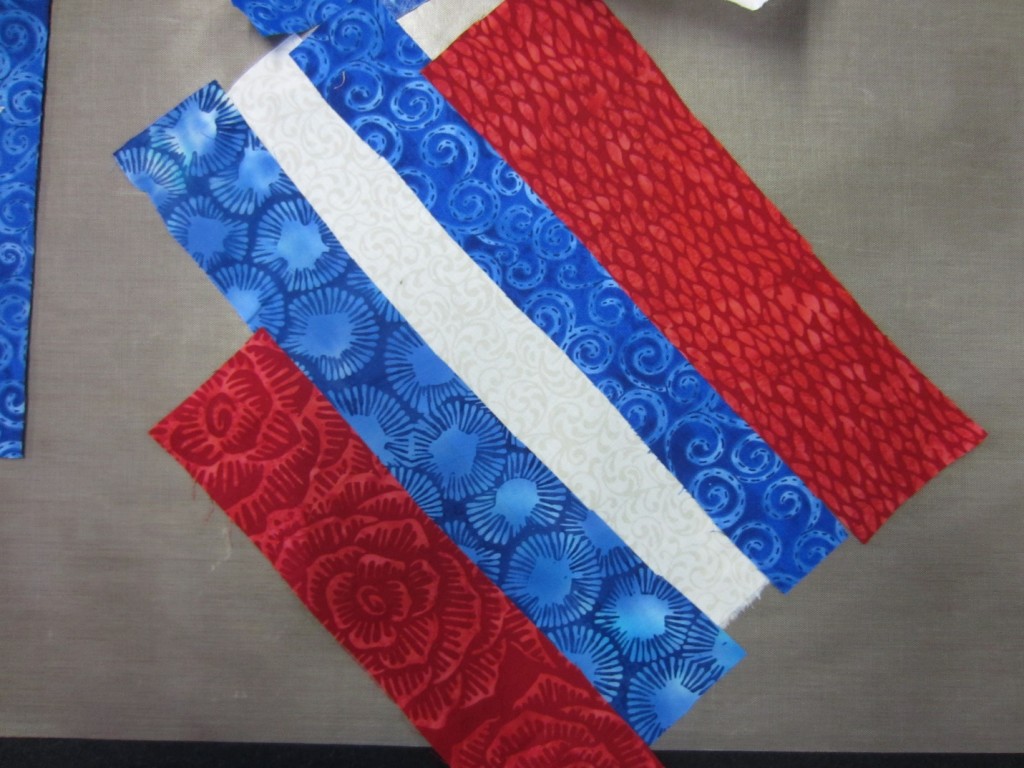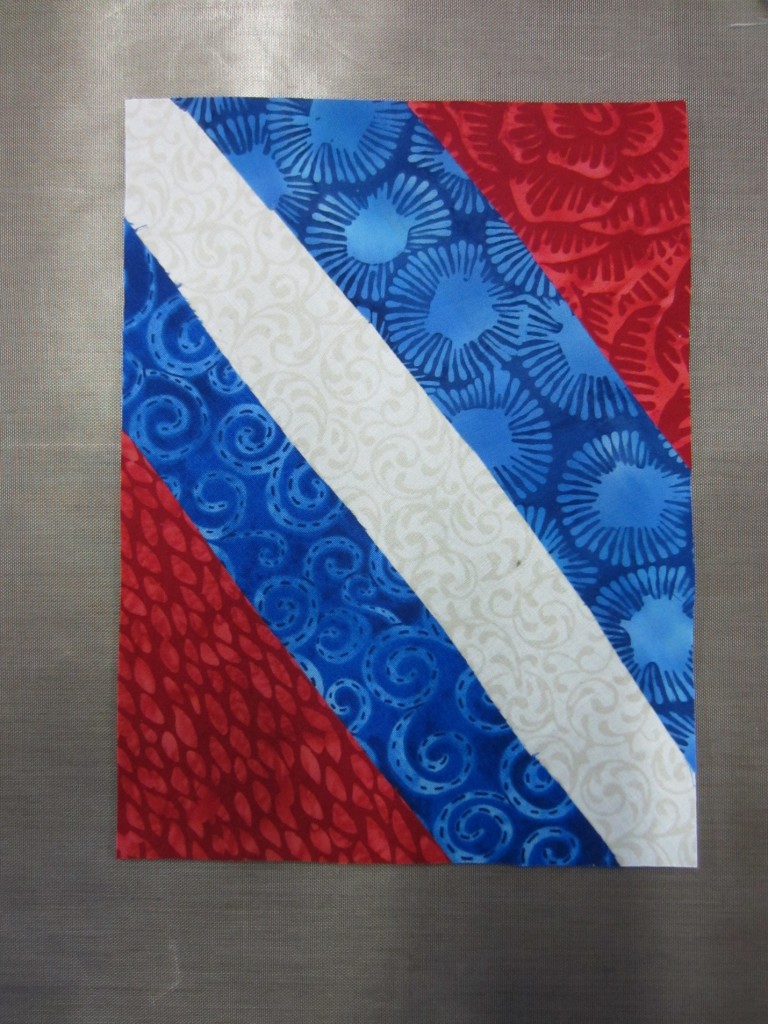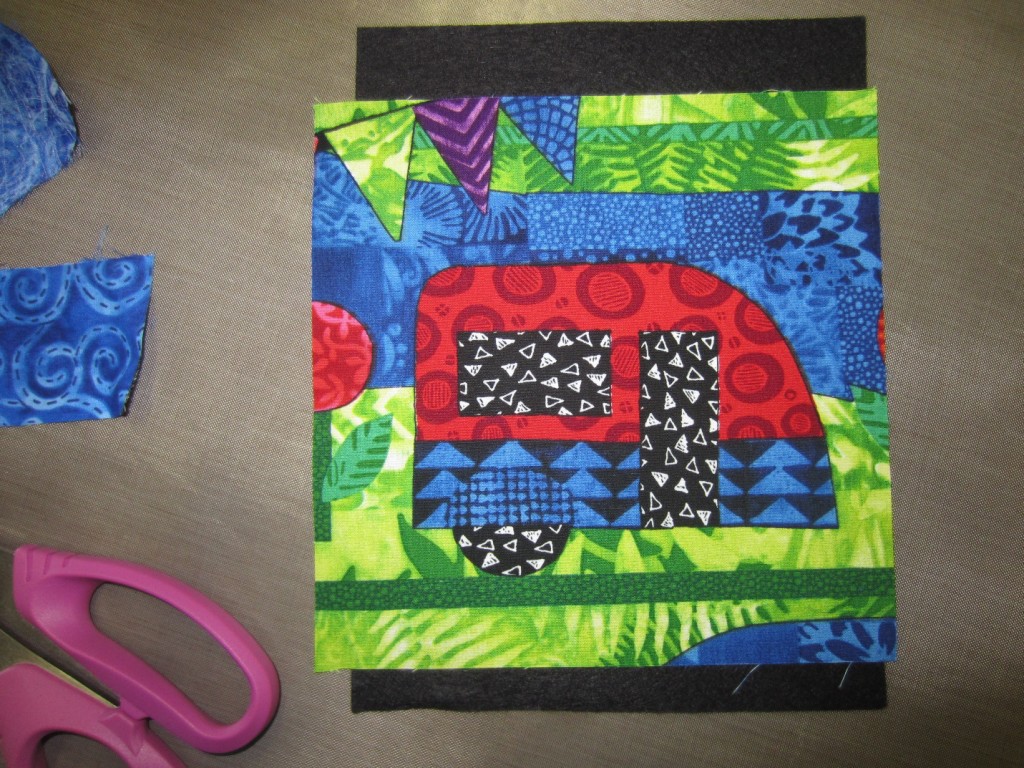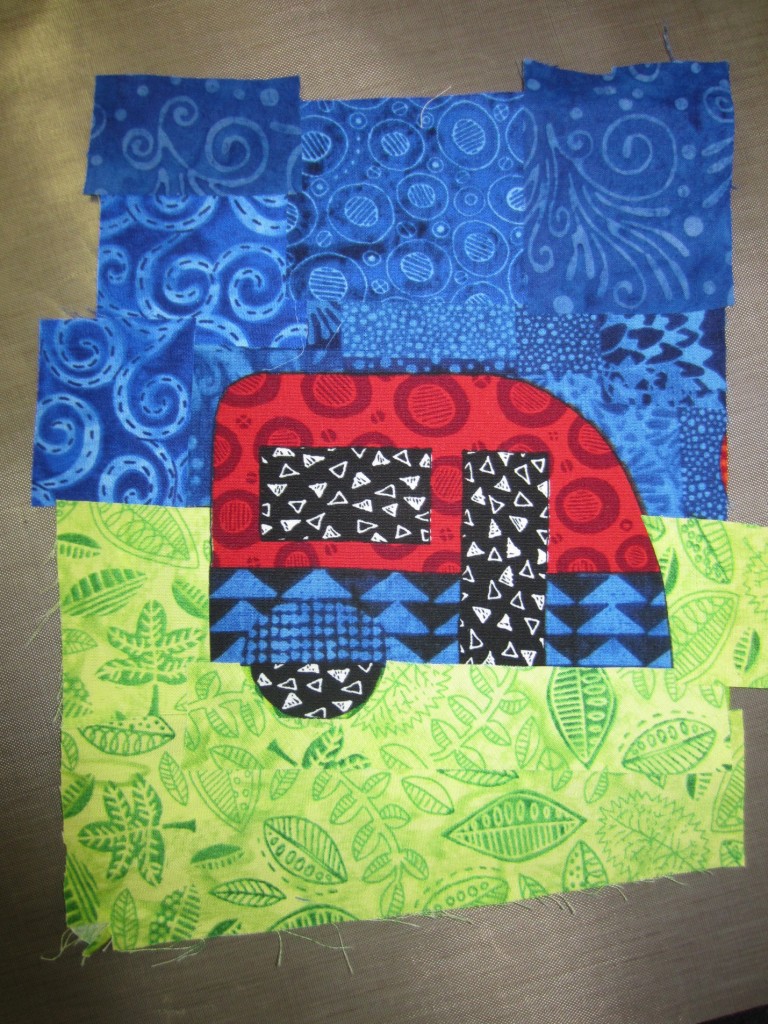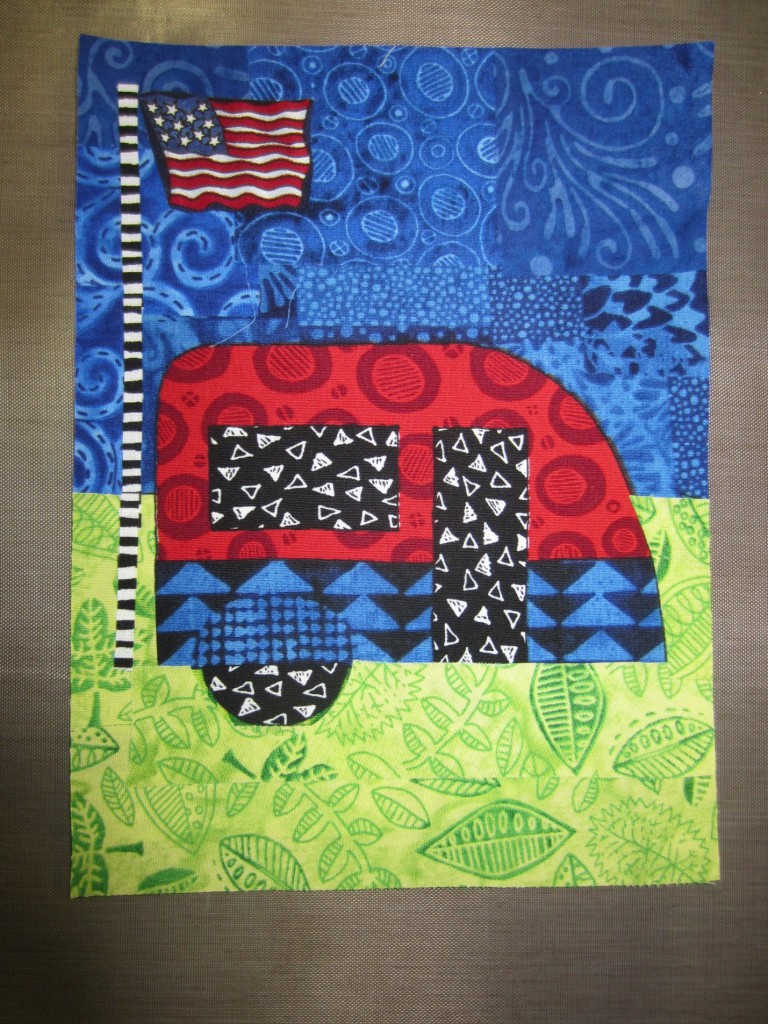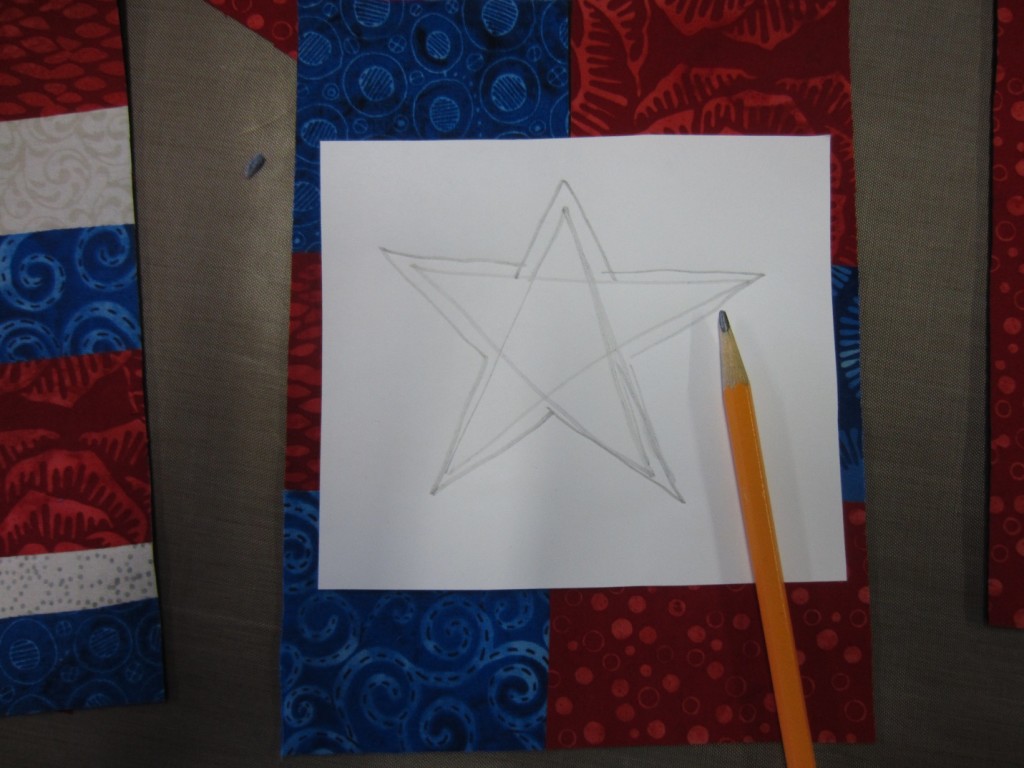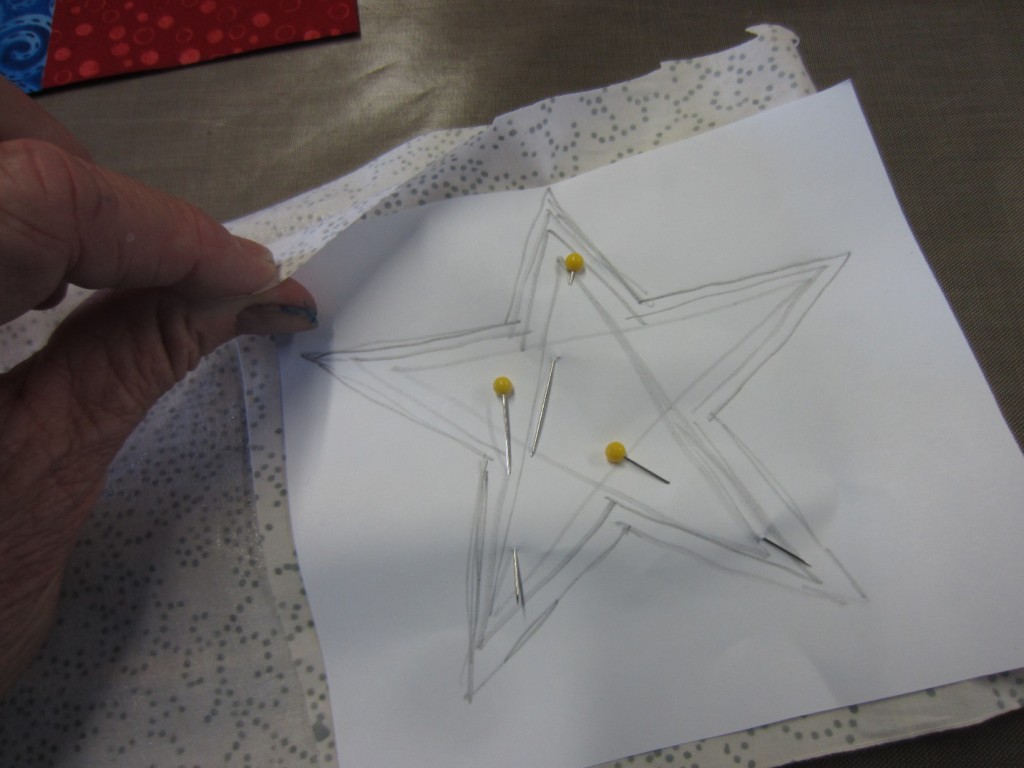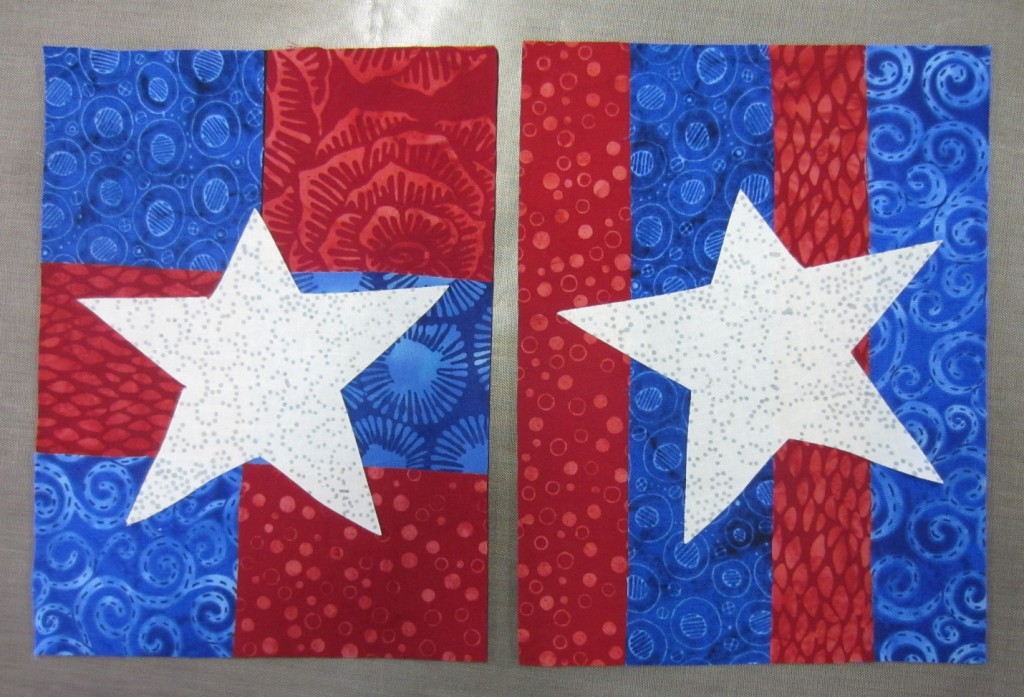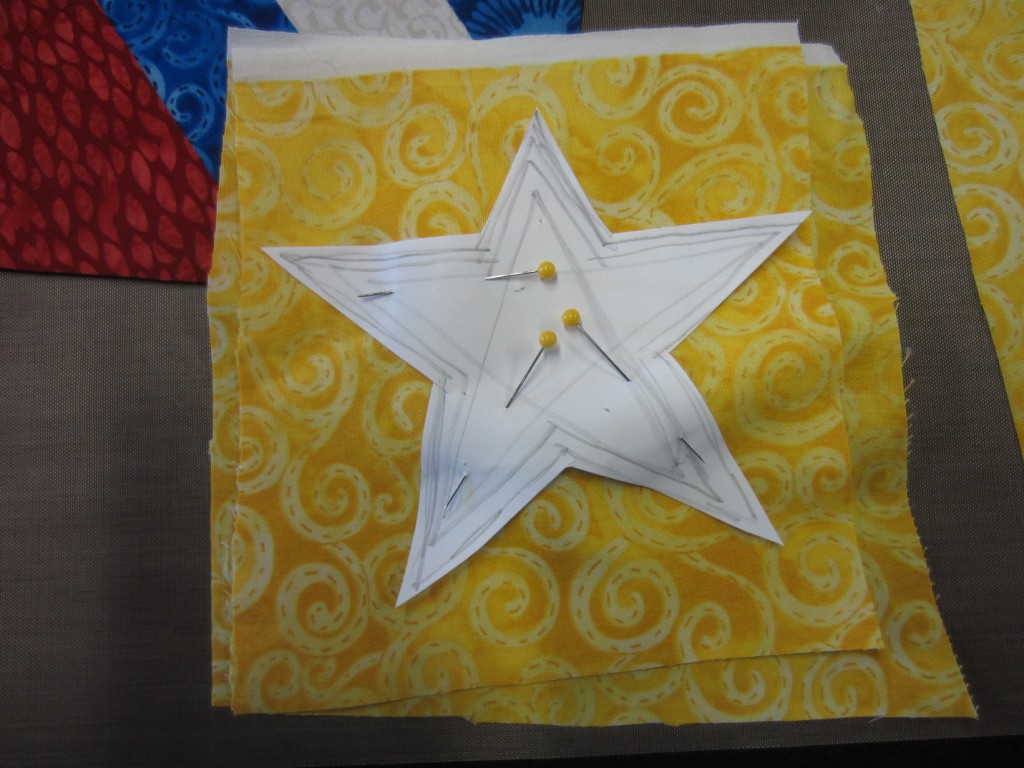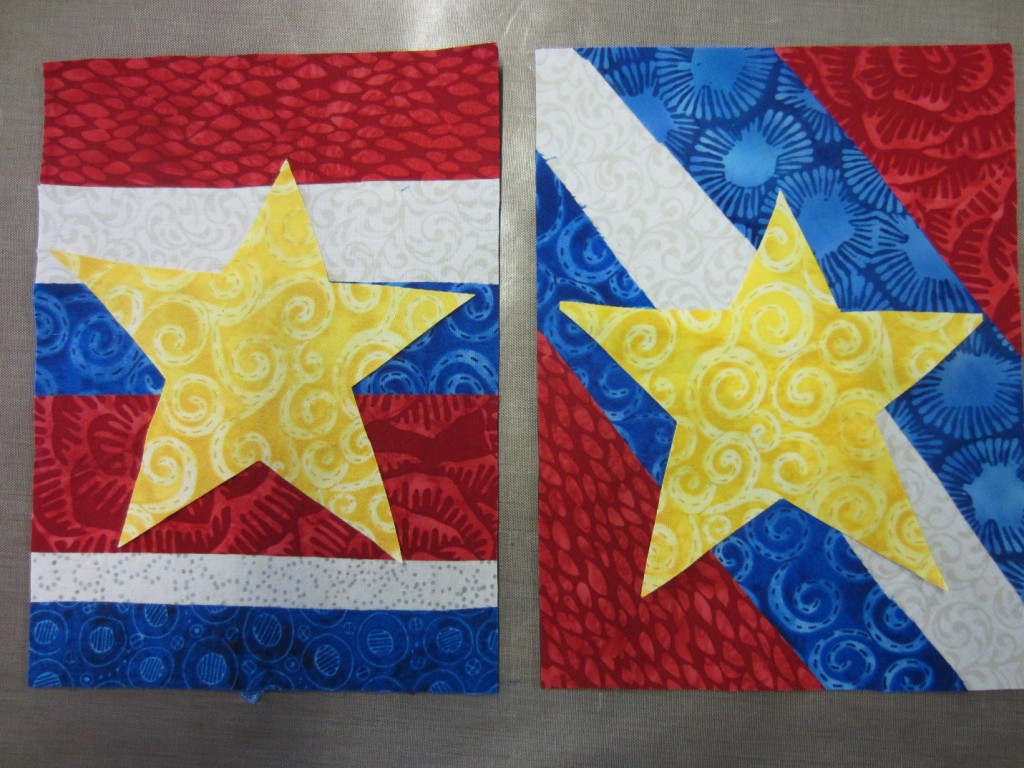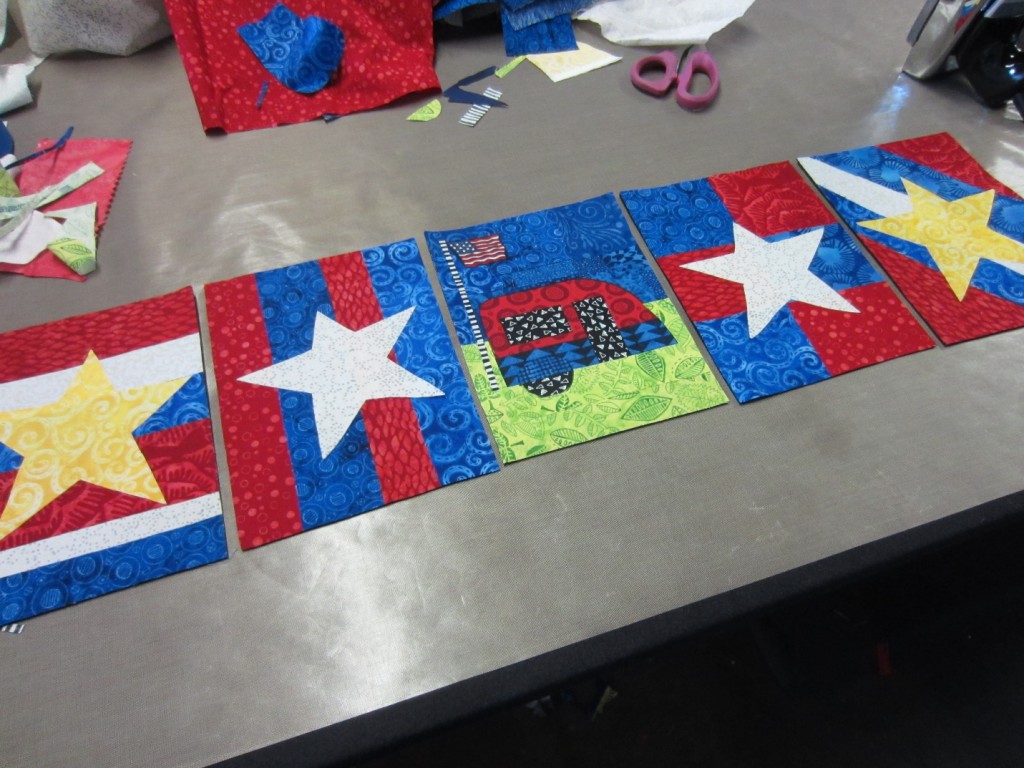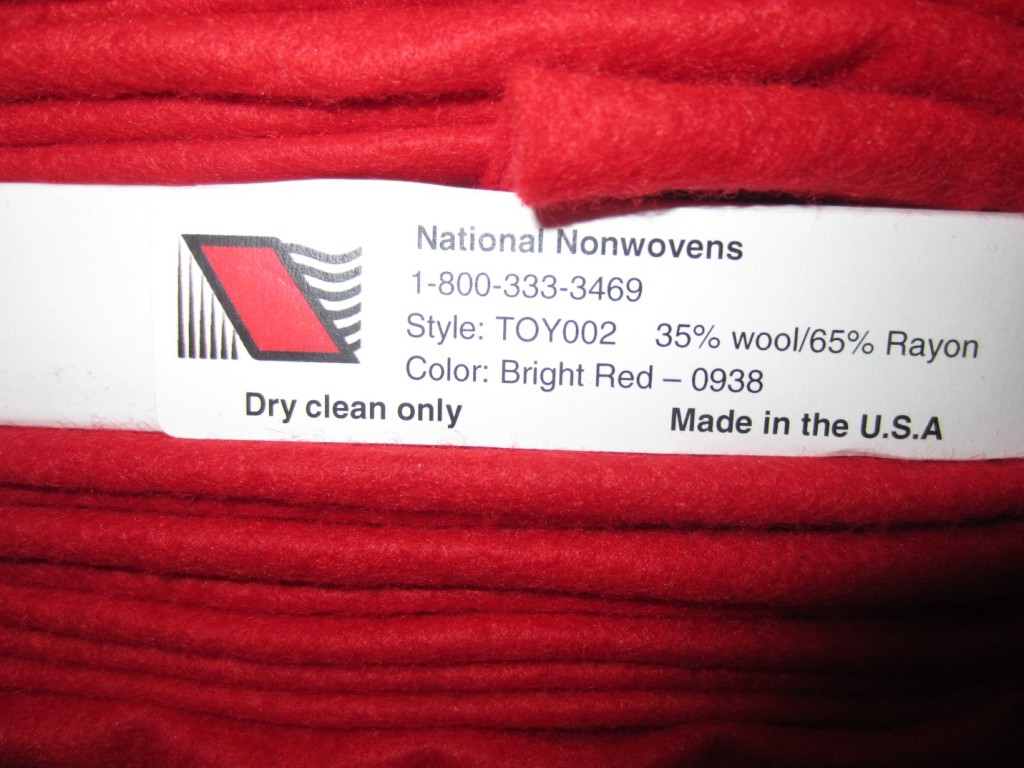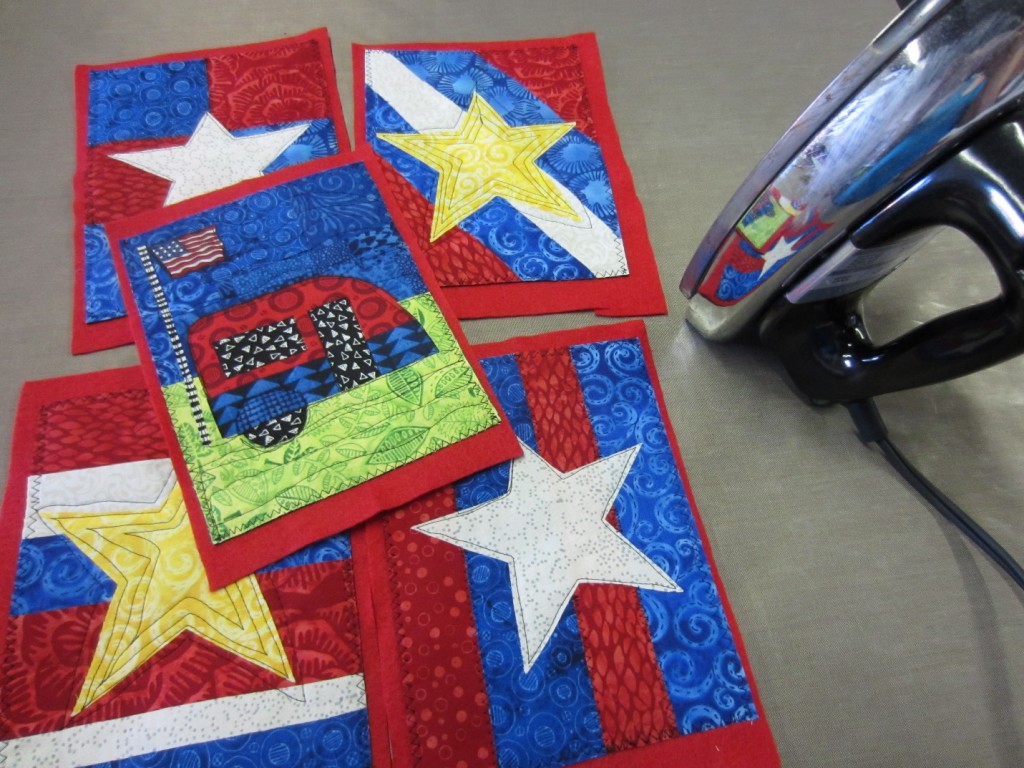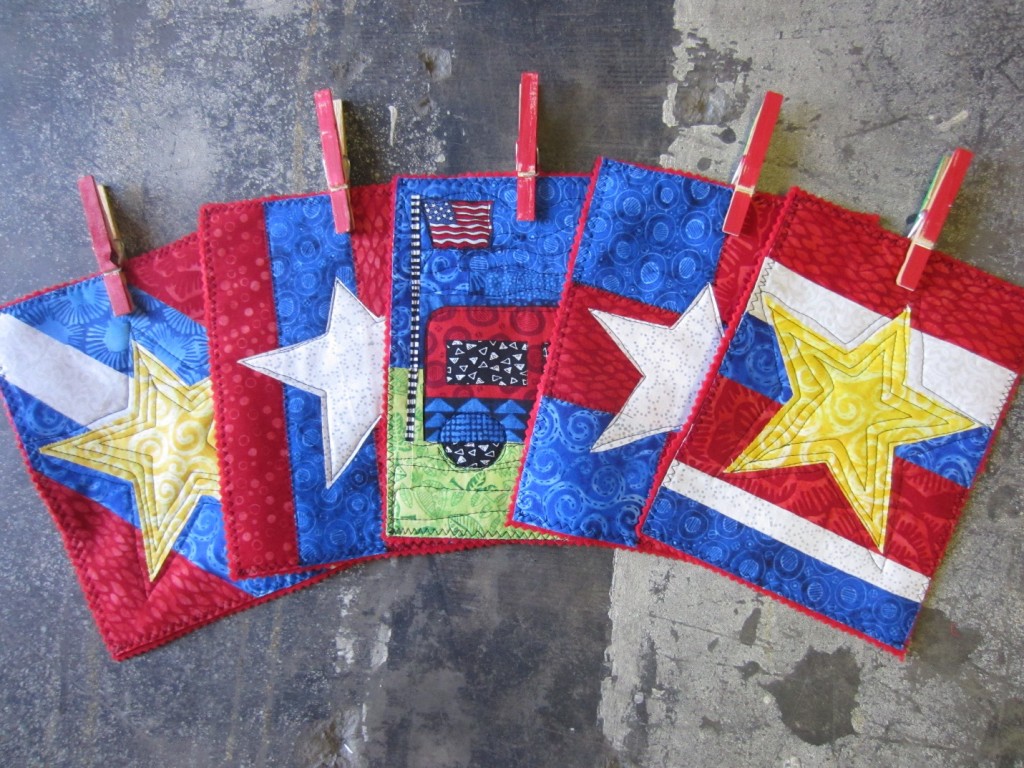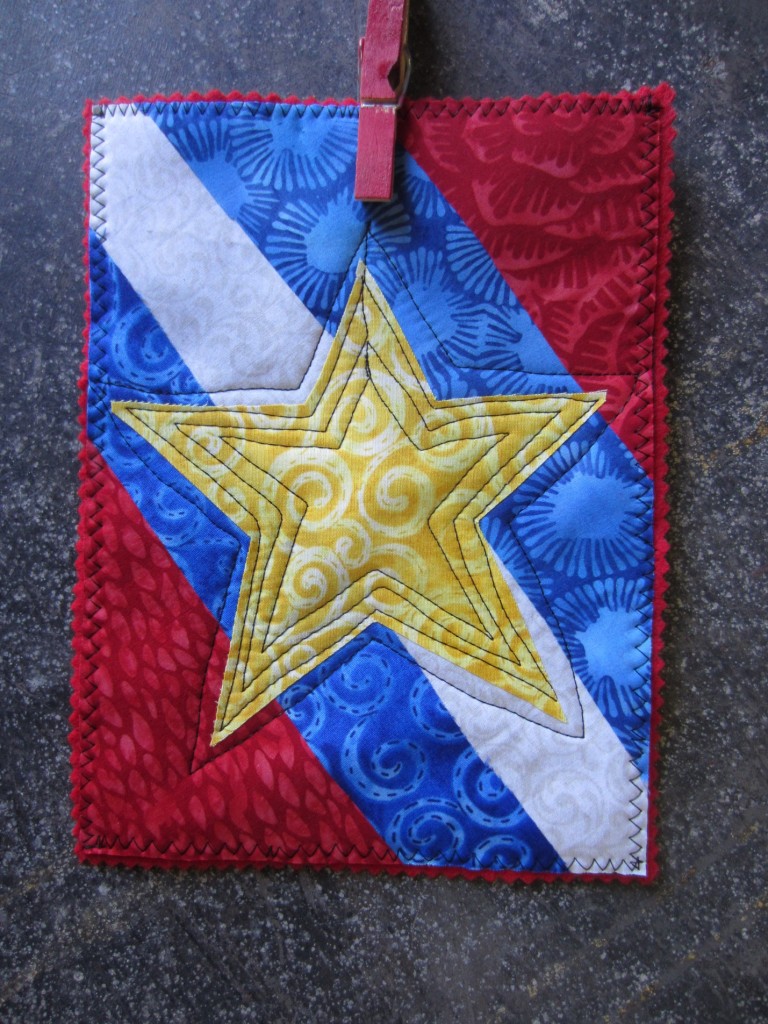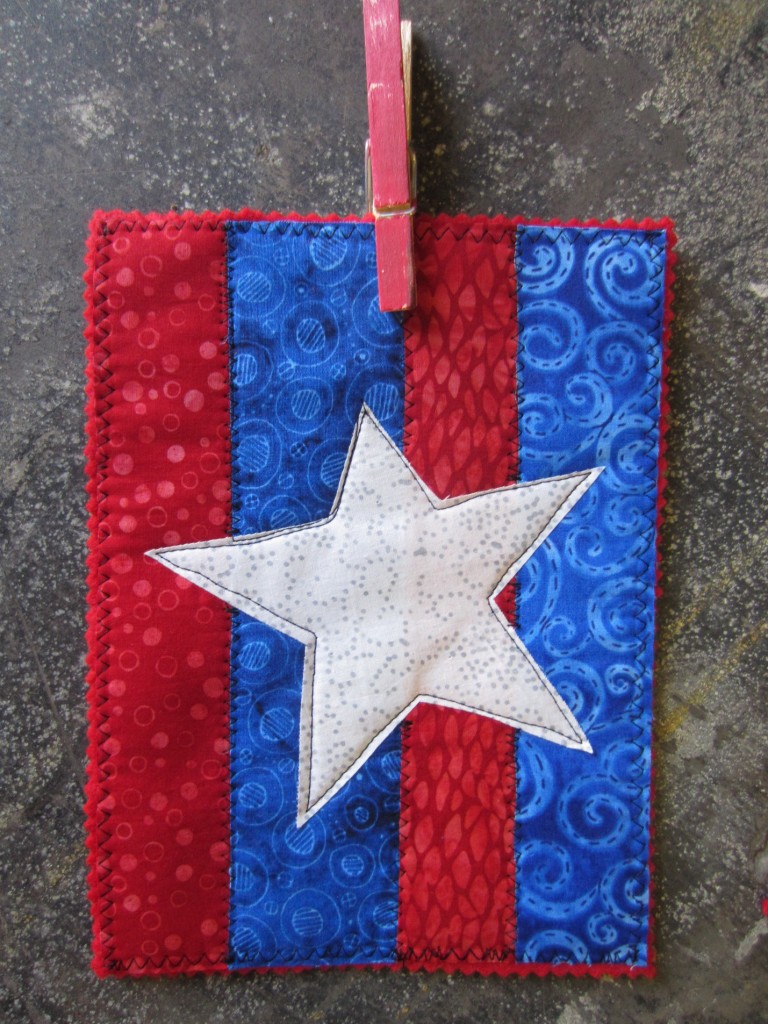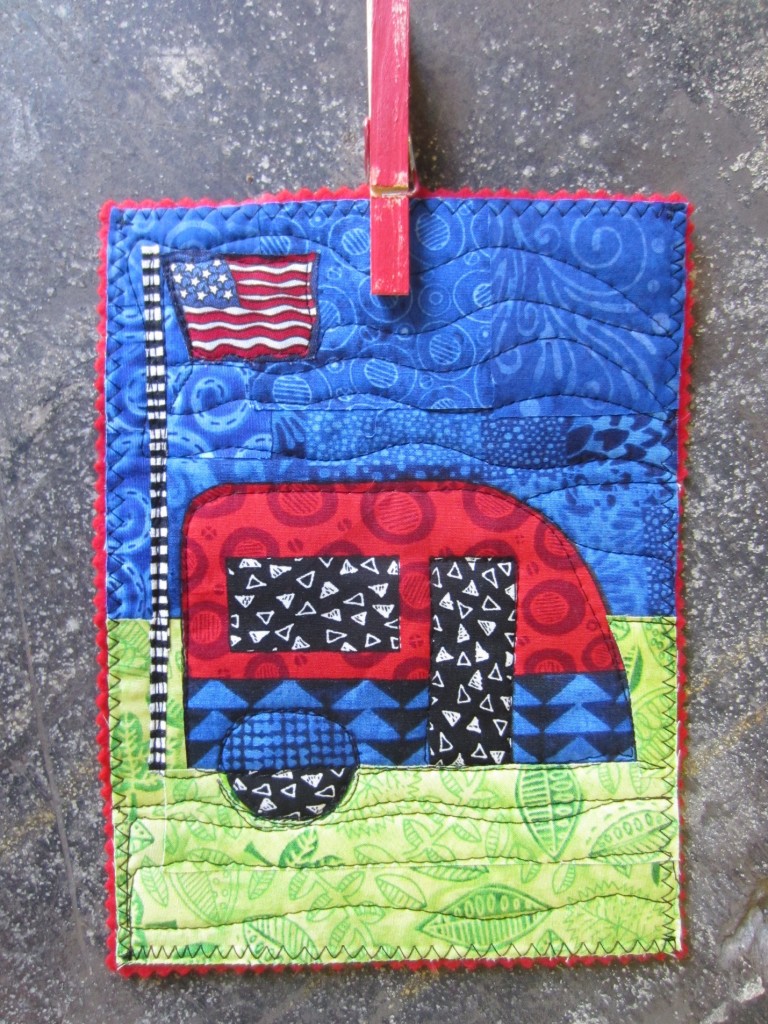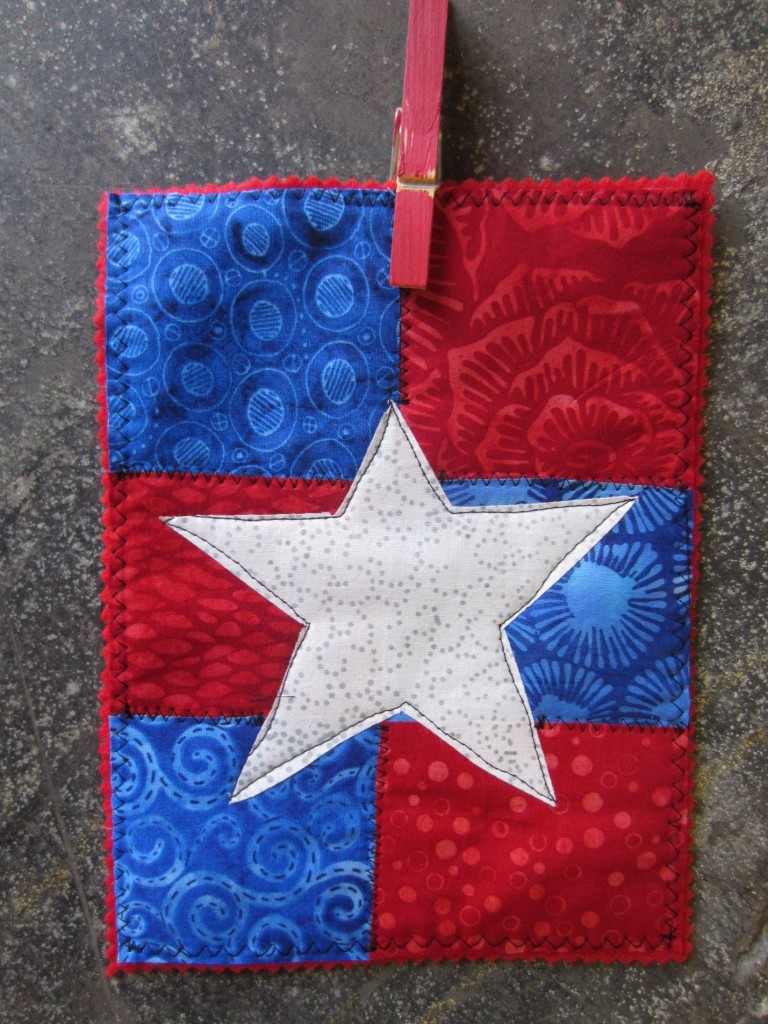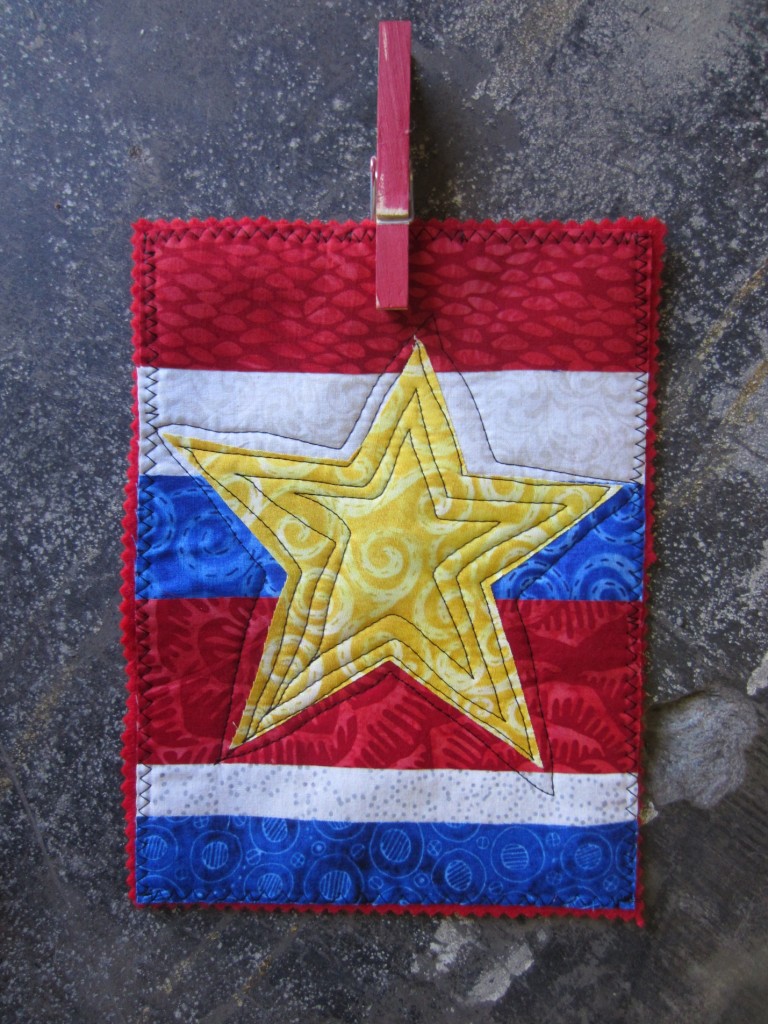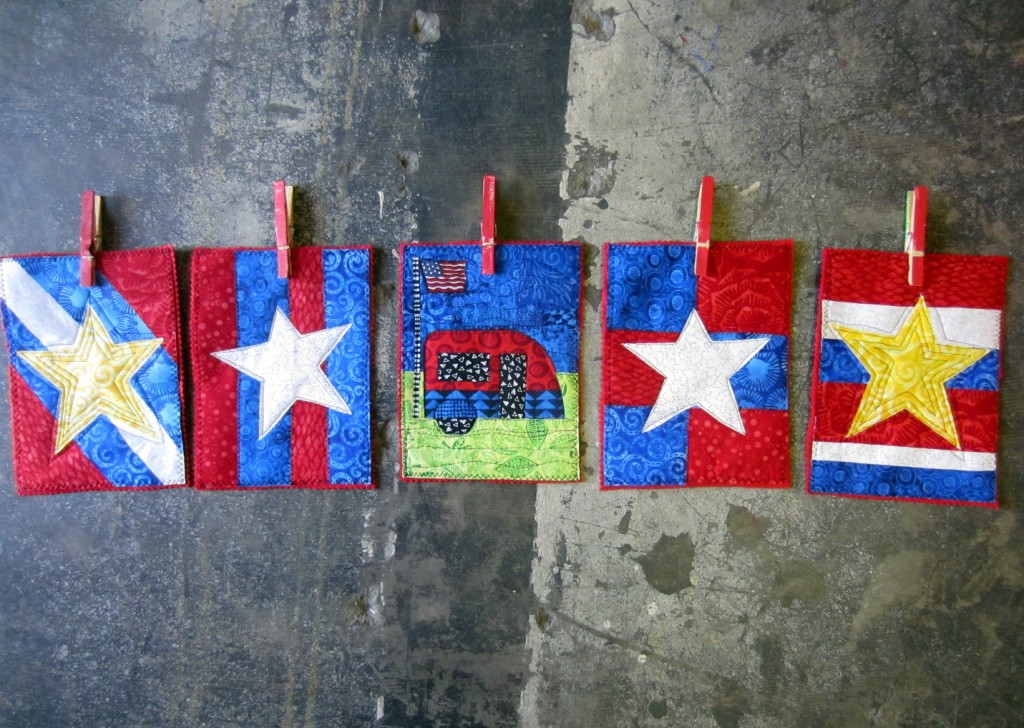Messenger Bag & iPad Case by Liz Kettle
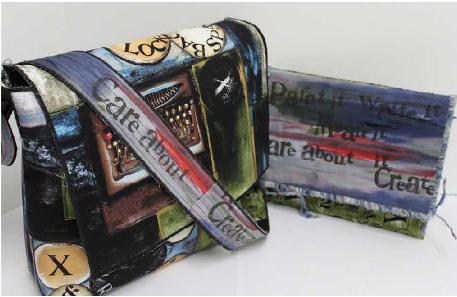
Nothing says back to school like a brand new book bag! Times have changed though, and in addition to the traditional bag, we need an iPad or Tablet case too. These simple and quick projects will have you ready for back to school in no time flat so you can enjoy the last remaining moments of summer.
Supplies:
Multi-Purpose cloth or canvas
Fabrics of choice
Batting (optional) choose a very flat batting such as Thermore
Misty Fuse or other fusible web
Rotary cutter with traditional and skip blades
Embroidery scissors
Hand Needles: 22 or 18 chenille or tapestry or a yarn darner
Machine Needles: size 90 sharp
A note about Multi-purpose cloth: Multi-Purpose Cloth or MPC is a wonderful non-woven canvas that is perfect for bags, totes, home décor and much more. It holds its shape better than canvas and is a dream to stitch through. MPC can also be painted with any type of fabric paint and you can skip the fabric layer all together.i
iPad or Tablet Case
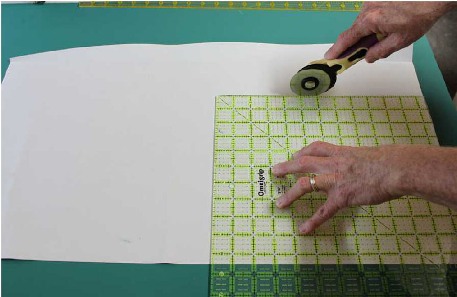
Using a rotary cutter, ruler and cutting mat, cut a piece of Multi Purpose Cloth 10 1/2″ x 24″. I prefer the larger 60mm rotary cutter for basic cutting because it cuts through everything so easily and it feels like I am done faster with the bigger blade.
Choose your fabrics. The case is made from just one piece of MPC so if you have a directional print like I do, you may want to cut it and piece it, to ensure the print is the proper direction when
the flap is folded over.
If you don’t have a directional print, simply cut your fabric 10 1/2″ x 24″.
If you do have a directional print, you will want to cut the main piece 10 1/2″ x 17 1/4″ and the piece that is for the front flap 10 1/2″ x 7 1/4″.
Piece the two fabrics together to create a piece that is 10 1/2″ x 24″.
Batting (optional): You may want to skip it for your first case. If you want to add a flat
batting, cut it 10 1/2″ x 24″.
Layer the MPC with a thin piece of batting and your fabric piece. Pin or fuse the layers together with Misty Fuse. I like Misty Fuse because it doesn’t add a lot of weight to the project and stiffen it, and I know the layers won’t shift while I am quilting it.
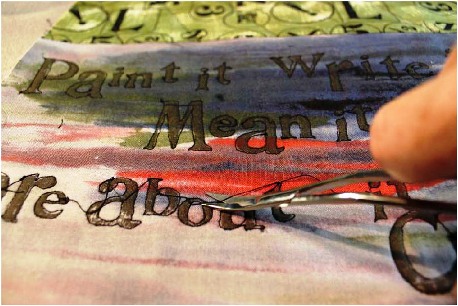
Choose some simple quilting for the surface. I stitched diagonal lines on the lower portion, and stitched around the text printed on the fabric on the flap portion. I use my indispensable 5″ double curved embroidery scissors to snip the threads between each of the layers. I don’t know how I lived without these scissors! They are perfect for snipping threads at the machine. The holes are faced up so they are really fast to pick up and the sharp points easily slide under the tightest thread snarl. Best of all, the gentle curve prevents me from accidently snipping my fabric. When I can’t find my seam ripper (a fairly common occurrence) I even use these to easily un-sew.
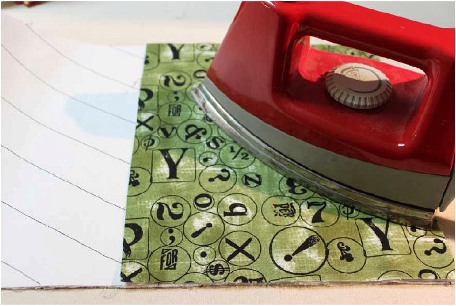
If you desire, you can also fuse a layer of fabric on the inside of the flap,
but it is perfectly fine to leave the MPC bare on the inside of the case.
If you do decide to line the flap with fabric, cut fabric and Misty Fuse 10 1/2″ x 9″.
Do not add batting to this layer. Double check to make sure you are fusing on to the back of the flap.
If you would like to create a small cut-out in the front panel of the case to make it easier to slip things in and out, do so now. I made a template to make the process easier because I make a lot of these bags. Cut a piece of card stock 10 1/2″ x 3″. Draw a line 1 1/2″ from one edge. Mark in from each edge 1 1/2″ and draw a 30 degree angle to join the lines. Cut out the resulting piece from your template. This is only a guideline you can make your cut out, any size you like, or even curved!
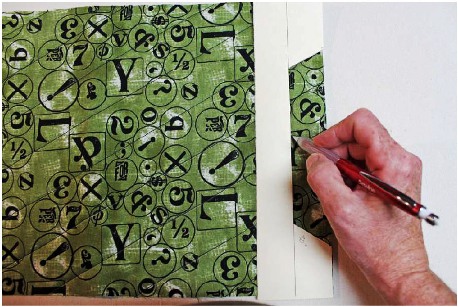
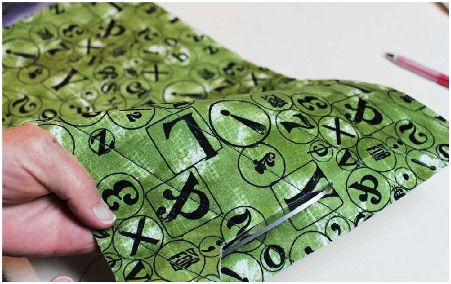
Mark the opening with a chalk pencil and then cut out with shears.
The micro serrated Havel’s shears help to cut nice sharp turns because
they hold on to the fabric while you turn it.
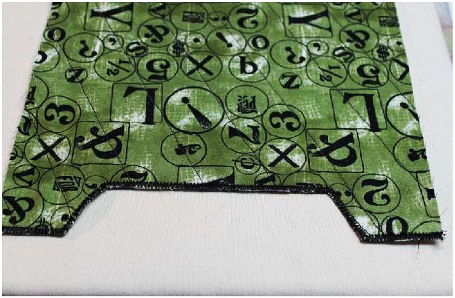
To finish this edge use a zigzag stitch.
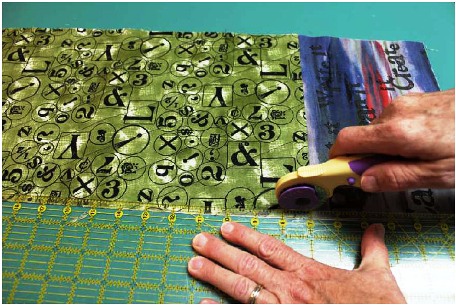
Load the skip cutting blade into your rotary cutter. Cut along the length of the fabric 1/4″ from each long edge and the front edge. The skip blade will make tiny slits along the edge but not cut off the fabric. Press hard to ensure you go through all layers of fabric. You can not re-cut if you don’t go through all layers. For this reason I suggest that you practice on a scrap of MPC layered with batting and fabric to get the feel of how hard you have to press to go through all the layers.
Next we will lace up the sides of the case. I used ripped strips of fabric for my case but I have also used ribbon, rayon seam tape and thick yarn. The ribbon and seam tape give the most polished look and the ripped fabric the most casual look. Ripped fabric strips, ribbon or seam tape should be between 3/8″ and 1/2″.
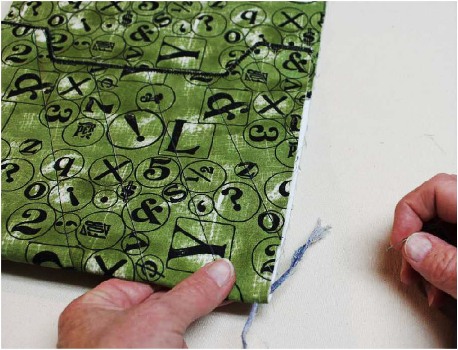
Fold the bottom half of the case up 8 1/2″. Thread your ribbon or fabric strips onto your large needle. Begin at the very bottom of the case and insert your needle from the inside of the case to bring it out the lowest slit created by the skip blade. Leave a tail, you will tuck this inside as you stitch to
encase it in the seam.
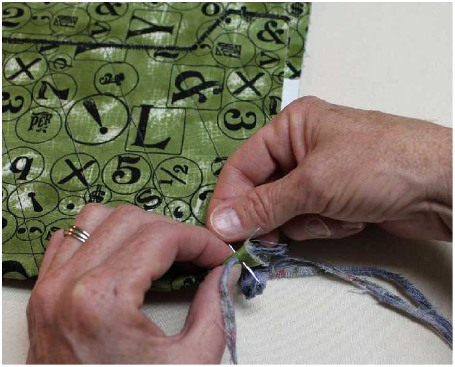
Use a simple whip stitch all the way up the side of the case, around the flap edge and down the other side. Simply thread the needle through the slits along the edge. This photo shows me stitching top to bottom but you may find bottom to top easier. When you need to add another strip of fabric simply tie the two pieces in a knot and continue stitching. If you like a neater edge you can work the tails into the seam with the large eye needle or a bodkin.
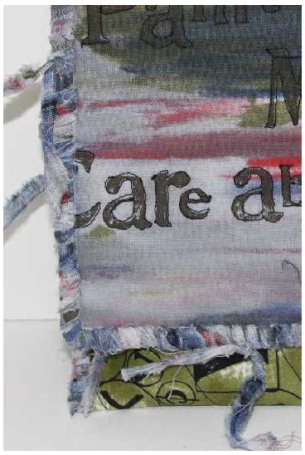
Messenger Bag
Cut a piece of Multi Purpose Cloth 15″ wide by 37″ long.
Cut a piece of Multi Purpose Cloth 2″ wide by 48″ long for the strap.
Cut Misty Fuse to cover both sides of the MPC main piece and the strap.
I did not use batting in this piece because of the bulk it would add to the side seams.
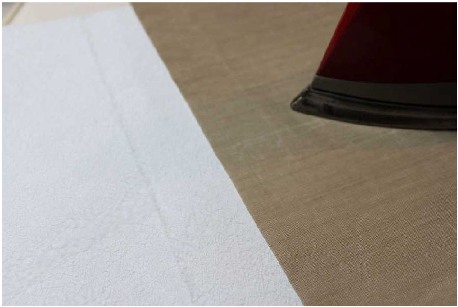
With this larger piece it is easier to pre-fuse the Misty Fuse to the MPC before fusing down the fabric. Place the Misty Fuse on the bag fabric, cover with a Teflon pressing sheet and heat with an iron. This is especially helpful if you have a directional print as I did. Once again the bag is made from one piece of MPC so I cut the fabrics into three pieces to keep the text oriented correctly.
If your print is not directional, cut your fabric 15″ wide by 37″ long.
If your print is directional, cut three pieces:
The flap will be 15″ wide by 10 1/2″ long.
The two remaining pieces will be 15″ wide by 13″ long
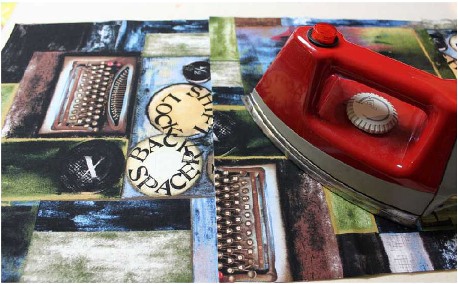
Place the fabrics on the pre-fused Multi-Purpose Cloth and fuse with a hot iron.
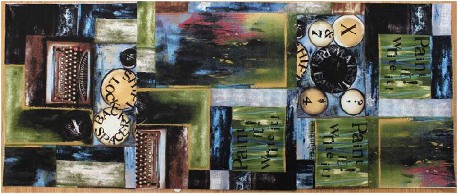
In this photo you can see the placement of the directional prints.
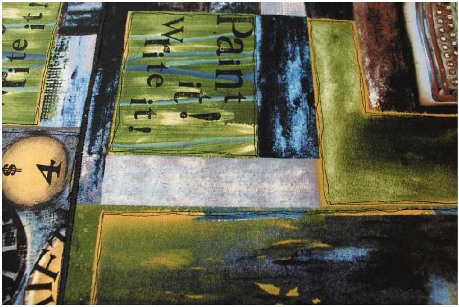
Quilt the piece by stitching as desired. I simply outlined some of the images
using an organic free motion stitch.
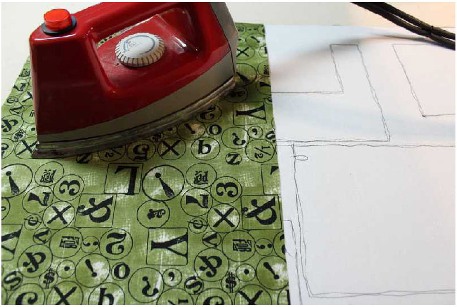
If desired, use Misty Fuse to fuse fabrics to the back of the Multi-Purpose Cloth.
You can cover the entire back (lining of the bag) or just the flap area.
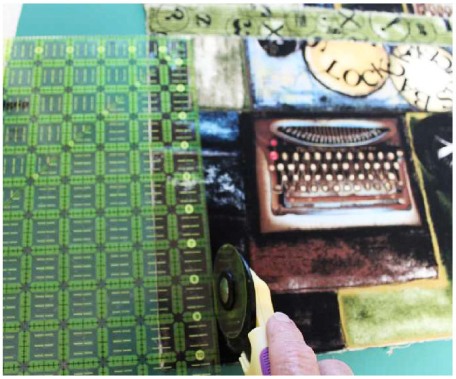
Trim the front flap by cutting a 10 1/4″ x 1 1/2″ strip off of both sides of the flap section.
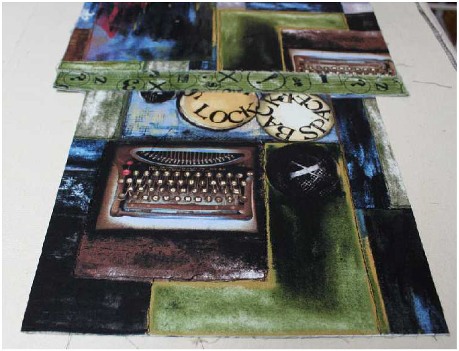
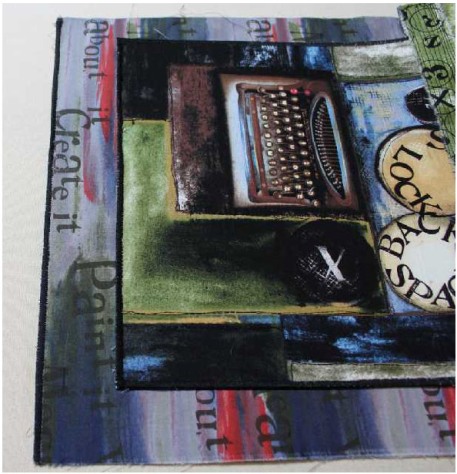
Finish the flap edges and the other edge with a satin stitch.
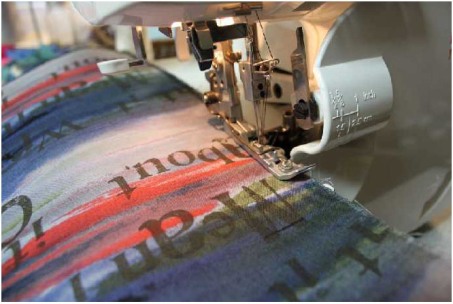
With right sides facing, fold the bottom half of the bag up 13″. The end of the bag should be right at the edge of the flap cut outs. Pin the edges. Stitch a 1/4″ seam along each edge. I used a serger for a strong seam. If you don’t have a serger simply stitch a straight stitch and then finish the
inside edge with a zigzag stitch.
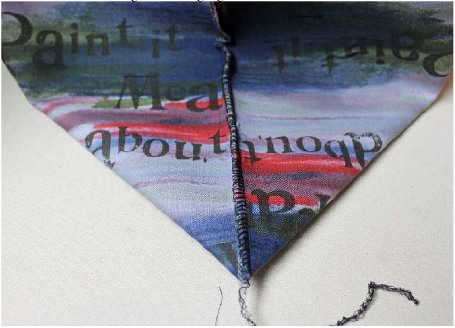
To create the bottom base of the bag fold the bag as shown
with the seam in the middle of the triangle.
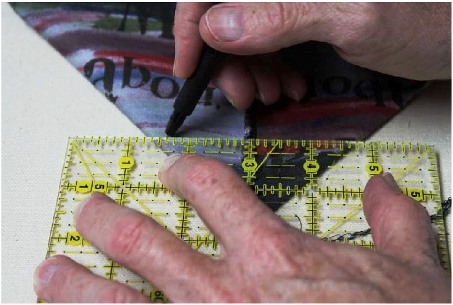
Mark a stitch line 1 3/4″ from the point of the triangle.
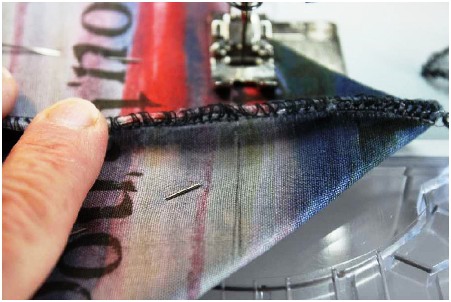
Stitch across this line. Then trim off the remaining triangle leaving a 1/4″ edge.
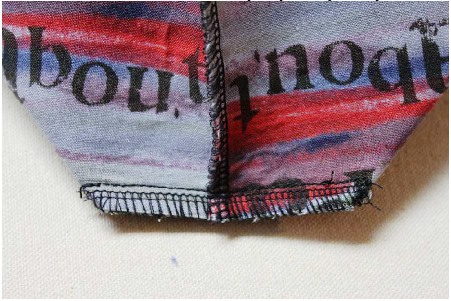
Serge the edge or zigzag stitch. Turn your bag right side out and set aside.
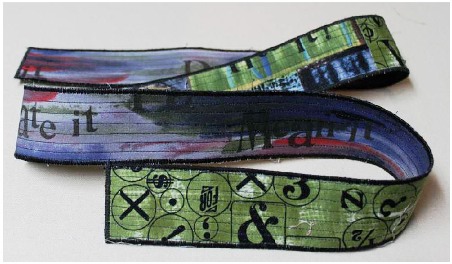
To make the strap, fuse fabric to both sides of the Multi-Purpose Cloth. Stitch along the length in straight lines or as desired. Finish the edges with a satin stitch.
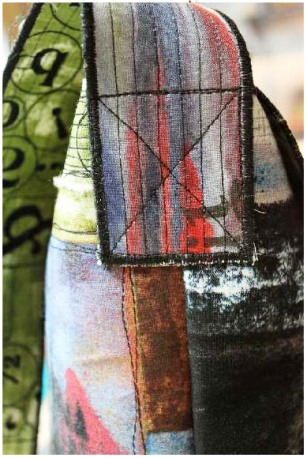
Center the strap on the side of the bag 2″ from the top edge of the bag.
Stitch around the edges and across the center as shown.
You can find Multi Purpose Cloth, and Havel’s scissors
and skip blades at these on-line stores:
www.ArtisticArtifacts.com
www.BlueTwigStudio.com
Fabrics used in this project are available at Artistic Artifacts.


Liz Kettle is a mixed media and textile artist living in Colorado. She is co-author of two books, Fabric Embellishing: The Basics and Beyond, and Threads: The Basics and Beyond. Liz loves teaching and sharing the joy of making the things in her articles, classes and at her fabulous retreat, Textile Evolution. Visit her blog and website, www.TextileEvolution.com
For a printable PDF version of Liz’s Messenger Bag and IPad Case, click here.
 2.) Pre-fuse and cut another piece of cotton fabric and cut to 11.5 x 14″.
2.) Pre-fuse and cut another piece of cotton fabric and cut to 11.5 x 14″.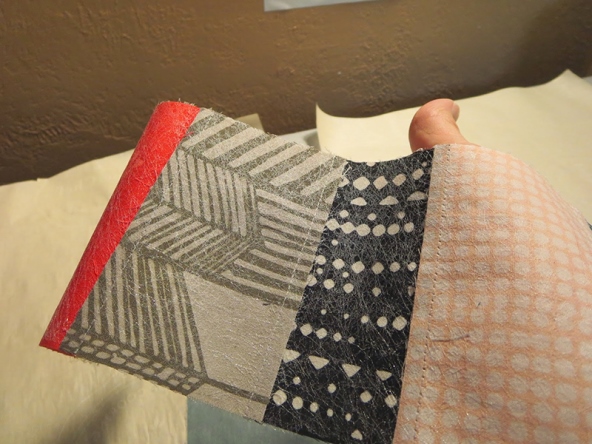 3.) Select your fabric to use for lettering and pre-fuse. Cut pieces that are large enough to cover each letter to be die-cut.
3.) Select your fabric to use for lettering and pre-fuse. Cut pieces that are large enough to cover each letter to be die-cut.
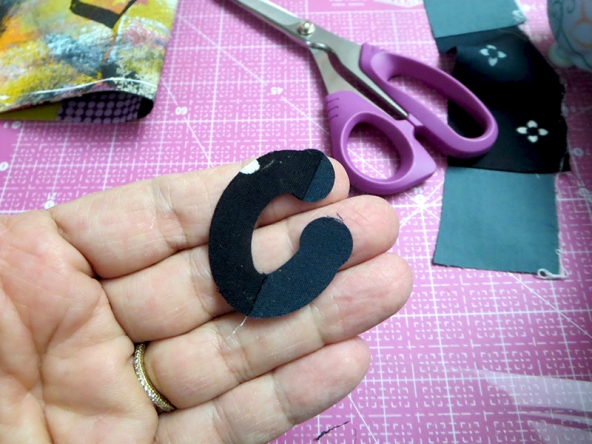 5.) Fuse the two rectangles together, right sides out. Trim edges with the rotary cutter. Fold the short ends in 1/4-inch toward the inside and stitch.
5.) Fuse the two rectangles together, right sides out. Trim edges with the rotary cutter. Fold the short ends in 1/4-inch toward the inside and stitch.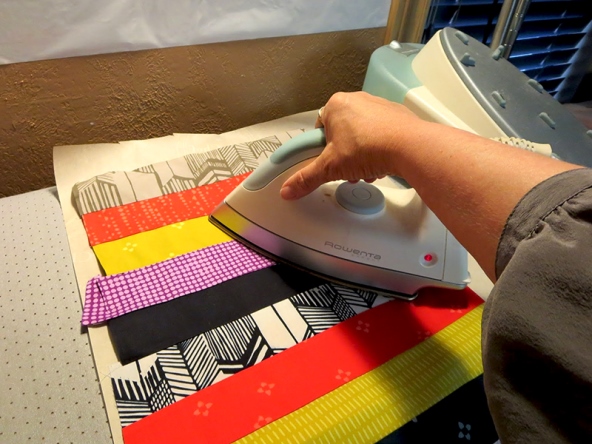
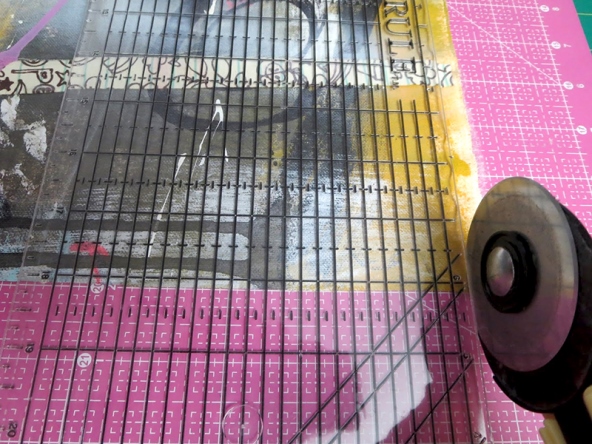

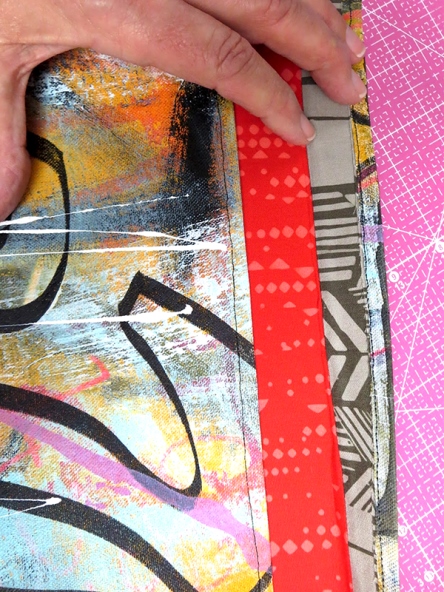 6.) Now, position your die-cut, pre-fused letters and heart (which was hand-cut with scissors) to the outside surface of the pouch on one side. Place between pressing sheets or parchment and fuse to the surface with a medium dry iron.
6.) Now, position your die-cut, pre-fused letters and heart (which was hand-cut with scissors) to the outside surface of the pouch on one side. Place between pressing sheets or parchment and fuse to the surface with a medium dry iron.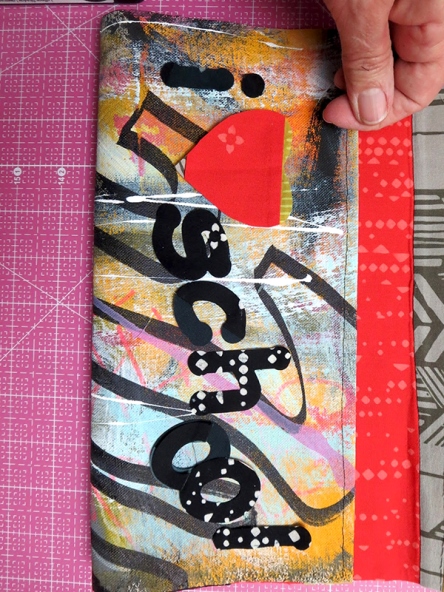
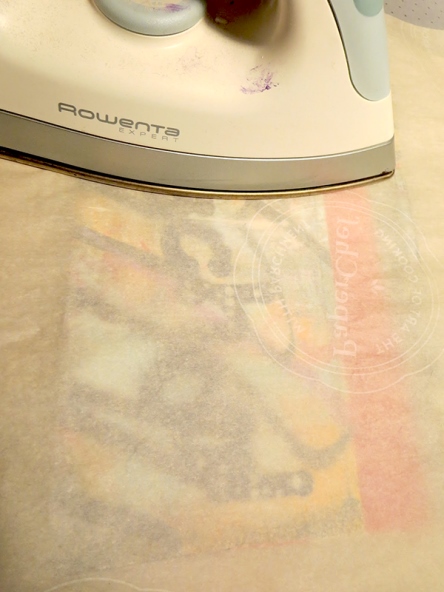 7.) At the sewing machine with feed dogs down, machine applique around each letter and the heart.
7.) At the sewing machine with feed dogs down, machine applique around each letter and the heart.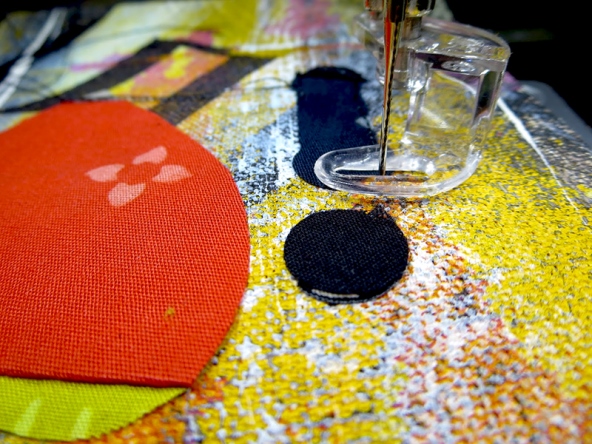
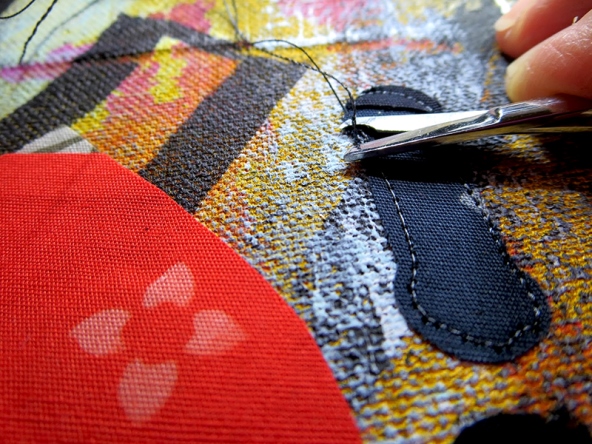 8.) Position the folded edge of the canvas next to one side of the zipper and stitch in place.
8.) Position the folded edge of the canvas next to one side of the zipper and stitch in place.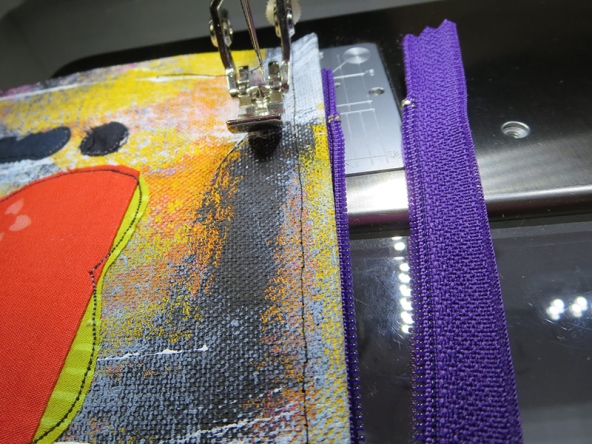
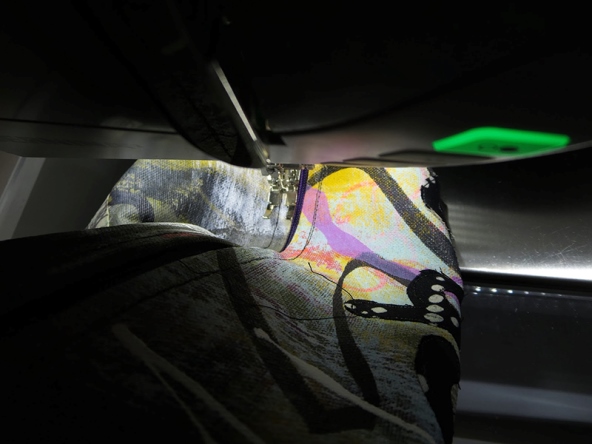 10.) Open zipper and turn pouch right side out. Using an awl or the ends of a pair of scissors gently push the corners from the inside to fully extent the corners.
10.) Open zipper and turn pouch right side out. Using an awl or the ends of a pair of scissors gently push the corners from the inside to fully extent the corners.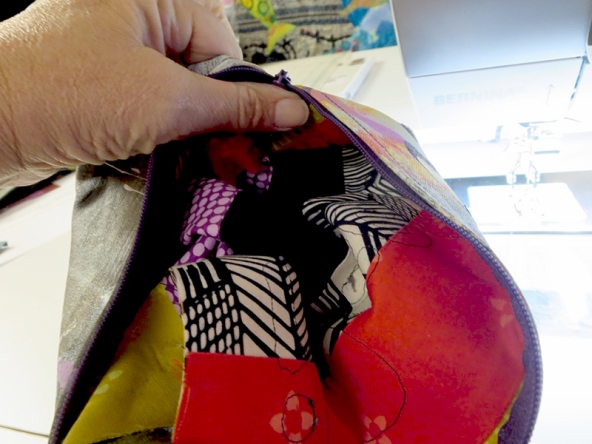 11.) At each end of the zipper stitch across the opening from one side to the other to stabilize the ends of the zipper. Repeat on both ends.
11.) At each end of the zipper stitch across the opening from one side to the other to stabilize the ends of the zipper. Repeat on both ends.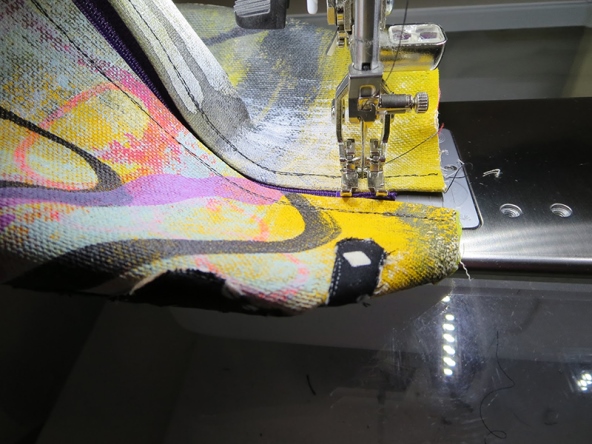 12.) You may wish to add some trim to the zipper pull for a bit more flair! Finished!
12.) You may wish to add some trim to the zipper pull for a bit more flair! Finished! San Antonio artist Leslie Tucker Jenison is inspired by the textural beauty found in the patterns of natural and man-made environments. Leslie loves the tactile experience of working with cloth and paper. Using dye, paint, and thread, Leslie creates unique imagery on these surfaces. The juxtaposition of the macro to microscopic world is a recurring theme in her work. Long fascinated by the historical connection of quilts and the people who make them, she serves on the board of the Alliance for American Quilts. Leslie exhibits internationally in galleries and juried exhibitions. Her work is held in both corporate and private collections. Leslie teaches a variety of quilt and mixed media workshops. She curates exhibitions and teaches as one half of “Dinner At Eight Artists” along with Jamie Fingal.
San Antonio artist Leslie Tucker Jenison is inspired by the textural beauty found in the patterns of natural and man-made environments. Leslie loves the tactile experience of working with cloth and paper. Using dye, paint, and thread, Leslie creates unique imagery on these surfaces. The juxtaposition of the macro to microscopic world is a recurring theme in her work. Long fascinated by the historical connection of quilts and the people who make them, she serves on the board of the Alliance for American Quilts. Leslie exhibits internationally in galleries and juried exhibitions. Her work is held in both corporate and private collections. Leslie teaches a variety of quilt and mixed media workshops. She curates exhibitions and teaches as one half of “Dinner At Eight Artists” along with Jamie Fingal.
